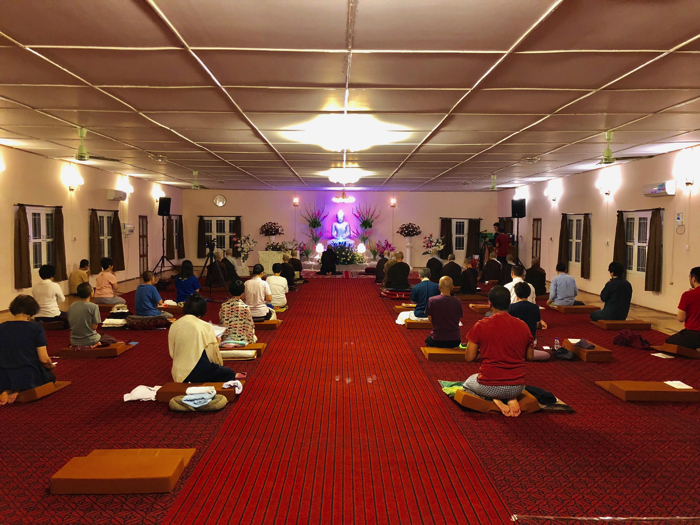- Project Leader : Kawamoto Kanae (Kyoto University, Center for Southeast Asian Studies)
Outline of Research
“Mindfulness” or “awareness,” an English translation of sati in the Pãli language, is derived from the verb sarati (to remember or memorize). Today, mindfulnessbased meditation, whose technique largely developed from the Burmese Buddhist tradition, is increasingly being applied in many different fields worldwide, including in various medical settings and in the area of psychotherapy. While the practice of vipassanã was reduced to simple forms and popularized in 19th century Myanmar, another form of meditation known as samatha, which aims to attain jhãna (a state of deep concentration), has, in the process, largely been eclipsed. This research focuses on the practice of the Pa-Auk Buddhist meditation technique, which can be understood as a renaissance of the jhãna movement in contemporary Myanmar. It will describe how the practitioners at the Pa-Auk monastery value the adoration of the sacred and saints, (which belong to the ancestry of jhãna practice), and how they are in awe of the ascetic Pa-Auk monastic tradition.
Purpose of Research:
My research aims to show the unique importance of Pa-Auk meditation and how it differs from popular mindfulness-based meditation techniques such as vipassanā, the major form of meditation in Myanmar. Through personal communication with Burmese practitioners, it became apparent to me that their motive for choosing a certain meditation technique is closely related not only with the level of their understanding of the Buddhist teaching and with their expectations regarding its practical benefits, but is also influenced by the charisma of the monastic instructors. For a better understanding of the sacred features of Pa-Auk meditation, this research can be divided into the three sections:
1) To examine the Burmese Buddhist tradition of meditation or vipassanā, as simplified by the renowned monk Ledi Sayadaw (1846-1923), who encouraged the general laity in its practice.
2) To show the historical process in the course of which the Sayadaw codified and promoted the practice of vipassanā nationally in 20th Century Myanmar, while the practice of jhāna was discouraged.
3) To examine the possible reasons why certain Burmese and Japanese practitioners are motivated to practice the Pa-Auk meditation technique as developed by Pa-Auk Sayadaw (1934-), especially as regards his emphasis on jhāna.
Its Significance:
Compared to the current tendency of classifying meditation techniques and focusing on their practical application in Buddhist Studies, this research instead emphasizes the aspect of the sacredness of a certain meditation tradition and how the instructors use it to appeal to the practitioners. In common with most Burmese, both male and female, who undergo temporary ordination, when I was a Buddhist nun practicing at a branch of the Pa-Auk monastery, I learned how deeply Burmese society is intertwined with Buddhism. Therefore, my research focusing specifically on the Pa-Auk tradition of Buddhist meditation, seeks to examine this aspect of modern change of Burmese culture.
Expected Results
The emergence of a particular meditation technique in modern Myanmar, besides being religious in nature, is also a societal phenomenon. The analysis of this religious movement will thereby hopefully enable us to understand how deeply Burmese spiritual and religious feelings are interconnected with society. My analysis will be applied to different areas of research, including religious studies, sociology, and anthropology. Moreover, it will seek to provide a bridge for medical science from the viewpoint of relating meditation with psychology.
 At the garden of the Brahma Vihari Meditation Centre |
 Meditation hall of the Brahma Vihari Meditation Centre |
